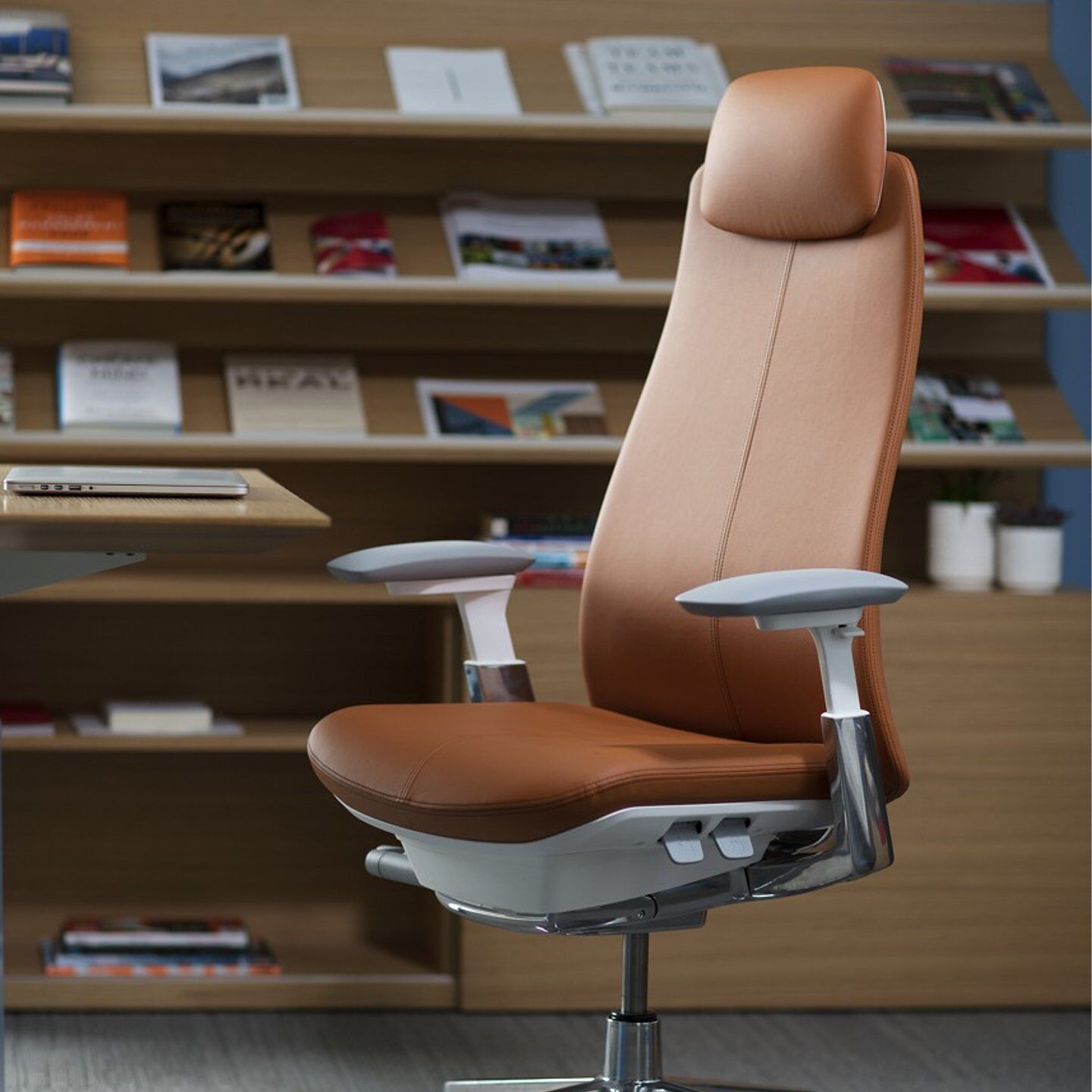Executive Seating
A leader who wears multiple hats needs a high-performing chair.
The pressure of running an organization largely rests in the hands of its leaders. From managing a busy schedule to inspiring and leading employees, such high-performers require best-in-class executive seating.

What Is Executive Seating?
Imagine a task chair with an elevated appearance, as well as enhanced ergonomic support, and you have an executive chair. Sometimes referred to as the manager’s chair, executive seating is designed for an organization’s corner office. While immensely comfortable, it portrays you and the organization in a sophisticated light.
Using executive seating for your desk offers the best sitting experience since it promotes productivity and provides ergonomic support during the workday. The adjustable ergonomic features allow you to tailor and customize positioning to fit your needs.
Differences Between Task Seating and Executive Seating
Size
Compared to executive chairs, task chairs tend to be lighter and smaller, taking up less space and making them easier to move around.
Looks
The backs of executive chairs are taller with higher back support and often include a headrest, which makes them look and feel more elegant.
Finish Options
Executive chairs often come in more premium upholstery and have aluminum bases compared to task chairs that are mostly with plastic bases.
Price
Executive chairs are more expensive than task chairs since they generally include additional features and sport premium finishes.

Ergonomic Features You Need in Your Executive Chair
The ergonomic adjustability of executive seating is one of its major selling points. There is, however, a range of flexibility in how ergonomically you can customize them. For example, some chairs offer full-on ergonomics adjustments, while others only have basic adjustments.
A good ergonomic executive chair should have at least the following features.
- Adjustable seat height
- Adjustable backrest
- Adjustable armrest
- Lumbar support
- Comfortable seat
Taking these features into consideration will help you choose a quality ergonomic chair that will serve its purpose of keeping you productive and healthy.

How Much Do Executive Chairs Cost?
The executive chair is one of the types of chairs in which you can find anything within your budget, but cheapening out will mean compromising on quality and ergonomic features, resulting in poor performance.
These chairs are priced based on a variety of factors, including
- Finish selection
- Quality
- Ergonomic features and adjustability
- Durability and warranty
You should budget between $500 and $1500 for an executive chair that supports dynamic sitting.
Properly Adjusting an Executive Chair
Correctly using and adjusting your executive chair can significantly reduce your risk of ergonomic injuries. To maximize the benefit of your chair, here are some tips.
You should set the chair height so that your feet can rest on the floor and your knees are at a 90-degree angle. To prevent pressure on the back of your thighs, adjust the chair to keep your thighs horizontal or slightly elevated from the knees to the hips.
Your armrest should be configured to allow your arms to rest flat on the desk, forming an angle between 90 and 110 degrees between your forearms and upper arms.
Your backrest should be adjusted in a way that your spine remains in the double S shape when sitting. The lumbar support should align with your lower back to prevent back pain.
Including ergonomic accessories like adjustable monitor arms help align your eyes with your screen when using an executive chair, making the whole experience more relaxing.

Is It Time to Replace Your Executive Seating?
Your executive seating should provide comfort, increase productivity, and project elegance. If this is no longer the situation, it may be time to replace it. To determine whether you need a replacement, consider some of the following factors:
Flattened seat cushion
A flat seat cushion can form pressure points that compromise blood circulation and increase the risk of chronic back pain.
Damaged or missing parts
Executive chairs with ergonomic adjustments come with various parts. When any of these pieces are damaged or missing, it can become impossible for the chair to work well.
It just doesn’t feel right anymore
If your chair starts feeling uncomfortable after a few hours of sitting in it, regardless of how you have adjusted it, it’s time to get a replacement.
Old and worn-out
No chair lasts forever. When you notice tears and cracks in the chair’s fabric, it defeats the purpose of displaying luxury and needs a change.

Sit well, feel well, work well. Give yourself the tools to perform at your peak.
Our team has been negotiating the world of executive ergonomic seating for over 30 years. You can rely on our expertise to find the chair that will help you feel great and take your performance to the next level. To find out which executive chair is right for you, fill out the form on the right to contact an office expert.
To learn more about how the right chair can improve productivity and wellness, download our FREE guide, Office Trends to Know: How to Enhance Productivity, Health, and Culture in the Workplace. The guide features the latest innovations in workspace design and ergonomics to create work environments built to perform.

